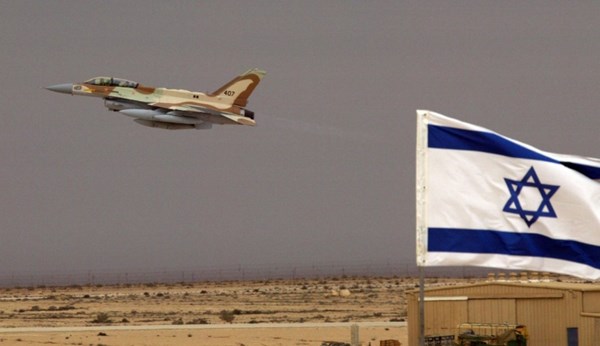Media: Russia agrees to tolerate Israeli attacks in Syria
After the most recent consultations to prevent conflicts in Syria, which the Russian and Israeli military delegations held last Thursday, the Israeli army’s press service released a generic statement on the “positive and professional atmosphere” in which the meetings took place and their “agreement to continue working together in the spirit of mutual understanding”.
During the talks, the two sides agreed on the new “rules of the game” which are based on the agreements on the mechanism of Russian-Israeli coordination from September 2015.
The new rules, which allow Israeli planes to carry out their military operations safely in Syrian airspace, were discovered by the Lebanese newspaper Al-Joumhouria in diplomatic and military reports leaked from Moscow.
According to the news outlet, “any Israeli military operation in Syria can only be held after informing the Russian base in Khmeimim about its times and routes, which Israel must adhere to. Furthermore, the informing must be done an adequate time interval before the start of the operation, in order to prevent any encounter between both sides’ aircraft including that which took place in September last year”.
Russia has also reportedly agreed to wait a while before activating the S-300 system. Despite the fact that officially these systems have been handed over to Syria, for a certain period they will be controlled by Russian operators.
The article says that “in so doing, Russia has tacitly acknowledged that the 44th division of the Syrian missile forces which operates the S-200 missile system in the vicinity of Latakia, made a mistake by shooting down the Russian plane, which was revealed in the investigation conducted by Russia and Israel”.
Another innovation of the Israeli-Russian “deconflicting” mechanism is that the aviation routes in range of the Russian S-400 system at the Khmeimim airbase north of Homs will no longer be used. In this way, the airspace closed off to the Israelis could stretch all the way to Turkey to the north, eastern Iraq, and the Syrian territorial waters to the west, as far as the territorial waters of Greece and Cyprus.
As a result, during the three Israeli attacks in Syria after the incident with the Russian Il-20 surveillance aircraft, the Israeli Air Force made its attacks by flying into Lebanon from the Mediterranean Sea in the region south of Beirut, instead of the routes from Keserwan to Baalbek and the Syrian territorial waters bordering on Tartus and Latakia that were used in the September raid.
Another new aspect of the conflict prevention mechanism is a term that restricts Israel’s choice of targets for missile strikes. According to this point, Israel may only attack bases and facilities belonging to Iran and its allies in Syria (e.g. Hezbollah) within 85 km of the Israeli-Syrian border. Moscow has also agreed to play a mediating role between Israel and Iran in arranging the withdrawal of Iranian and pro-Iranian forces from the Israeli border.
